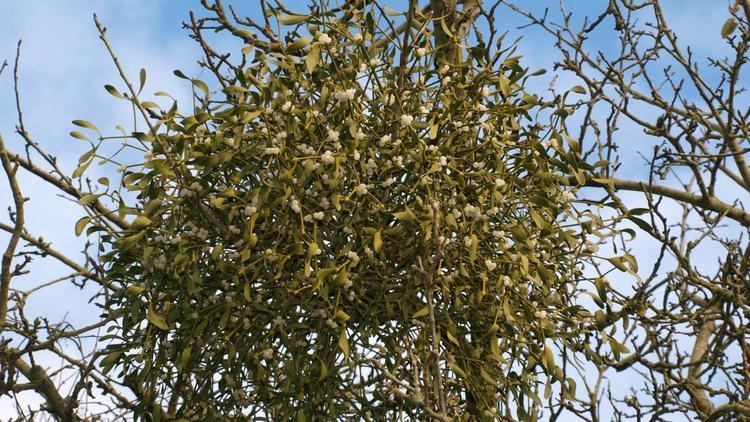Scientific name Viscum Rank Genus | ||
Similar Holly, Santalaceae, Loranthaceae, Lindens, Oak | ||
Mistletoe viscum album ayurvedic herb for cancer treatment
Viscum is a genus of about 70–100 species of mistletoes, native to temperate and tropical regions of Europe, Africa, Asia and Australasia. Traditionally, the genus has been placed in its own family Viscaceae, but recent genetic research by the Angiosperm Phylogeny Group shows this family to be correctly placed within a larger circumscription of the sandalwood family, Santalaceae.
Contents
- Mistletoe viscum album ayurvedic herb for cancer treatment
- poisonous plants 1 2 1 viscum album mistletoe
- Toxicity in the genus Viscum
- Selected species
- References
They are woody, obligate hemiparasitic shrubs with branches 15–80 centimetres (5.9–31.5 in) long. Their hosts are woody shrubs and trees. The foliage is dichotomously or verticillately branching, with opposite pairs or whorls of green leaves which perform some photosynthesis (minimal in some species, notably V. nudum), but with the plant drawing its mineral and water needs from the host tree. Different species of Viscum tend to use different host species; most species are able to utilise several different host species.

The flowers are inconspicuous, greenish-yellow, 1–3 millimetres (0.039–0.118 in) diameter. The fruit is a berry, white, yellow, orange, or red when mature, containing one or more seeds embedded in very sticky juice; the seeds are dispersed when birds (notably the mistle thrush) eat the fruit, and remove the sticky seeds from the bill by wiping them on tree branches where they can germinate.
poisonous plants 1 2 1 viscum album mistletoe
Toxicity in the genus Viscum
Viscum species are poisonous to humans; eating the fruit causes a weak pulse and acute gastrointestinal problems including stomach pain and diarrhea. At least one of the active ingredients is the lectin viscumin, which is an intensely toxic. It inhibits protein synthesis by catalytically inactivating ribosomes. In spite of this, many species of animals are adapted to eating the fruit as a significant part of their diet.
Selected species

